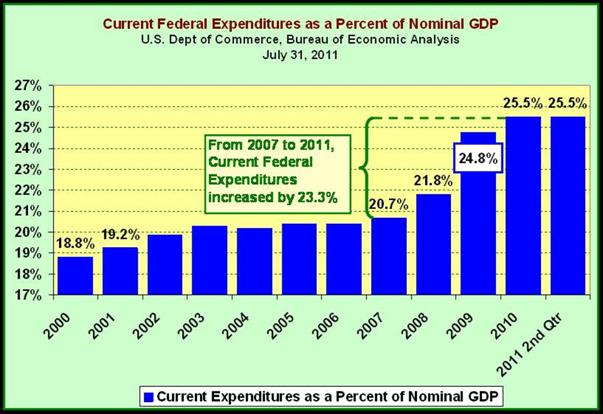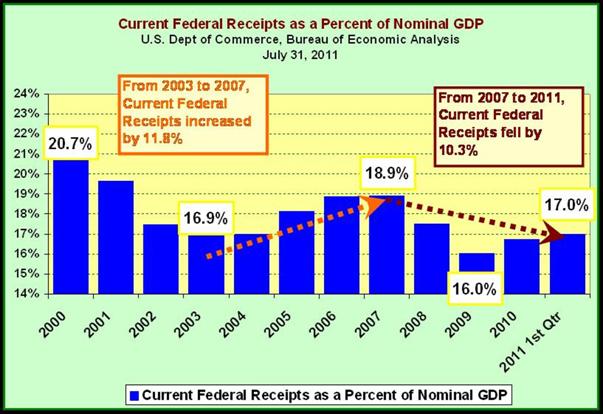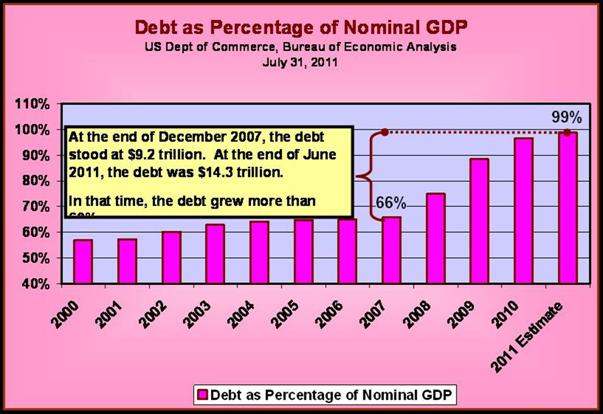August 1, 2011
For a downloadable version, click the following:
Who should you trust for the good life, free market capitalism or creeping socialism?
…ah, that is the question
A week or so ago the Charlie Rose Show (the first 20 minutes) included commentators Gerald Seib from the Wall Street Journal, Al Hunt from Bloomberg News and the Dan Bolz from the Washington Post discussing the Debt Limit Talks. The ‘conventionally wise’ Beltway message rang loud and clear. Why go through the pain of fiscal restraint in order to squeeze the Federal government to 19 or 20% of GDP when we can have spending levels at 22 or 23% with the current style of budget-less government spending. So what the big deal? There was almost a sense that this debt ceiling debate was strictly a political exercise, a ploy that had nothing to do with economic reality…odd, indeed.
Well first, the Current Federal Expenditures are in the 25% range of GDP, rising 23.3% since 2007, so the 19% vs. 21% level size of the federal government is a moot issue.
The second point is that Current Federal Receipts as a percent of GDP went from 18.9% to 17.0%, falling 10.3% since 2007.
The end result is that have the perfect storm: rising expenditures – increasing by around 30% from $2.9 trillion in the 2007 calendar year to $3.8 trillion in 2011; and falling revenues – decreasing around 5% from $2.7 trillion in 2007 to $2.5 trillion in 2011.




Let’s be blunt…
Is this economy to be oriented toward the people, by the people, and for the people and of the people? Or is it to be run by a few and for few and their favored entourage?
Shrinking the private sector and growing the government sector is not a zero-sum game, where the gains and losses balance out (redistribution). In the long run, in fact, it has proven to be a distinctly negative sum-game. Witness the rising Gini Coefficient – measuring income distribution…since 1968 has moved from 38.6% [when the Great Society was being implemented] to above 46%, indicating worsening disparity.
To the extent free market capitalism is guided by Adam Smith’s Invisible Hand of Competition, it brings society toward very desirable goals. A free market capitalistic economy is ultimately one that serves the people and NOT simply the decisions of a few in the private sector and/or in the public sector (government).
The goals that competitive free market capitalism brings society toward are efficiency and equity on the microeconomic level and high employment and a reasonable degree of price level stability as well as a consensus driven rate of economic growth. The decisions of the many, NOT the few, dictate what an economy will produce in the way of goods and services, in what manner those goods will be produced and in distribution of income (the reward of the goods and services produced) with maximum freedom to the people as consumers and productive resources. It is an economic system that is based on the principle of subsidiarity, again, where the decision-making is driven down to the lowest level possible…after all, who knows/understands better than the individual (in most cases) what is best for them?


